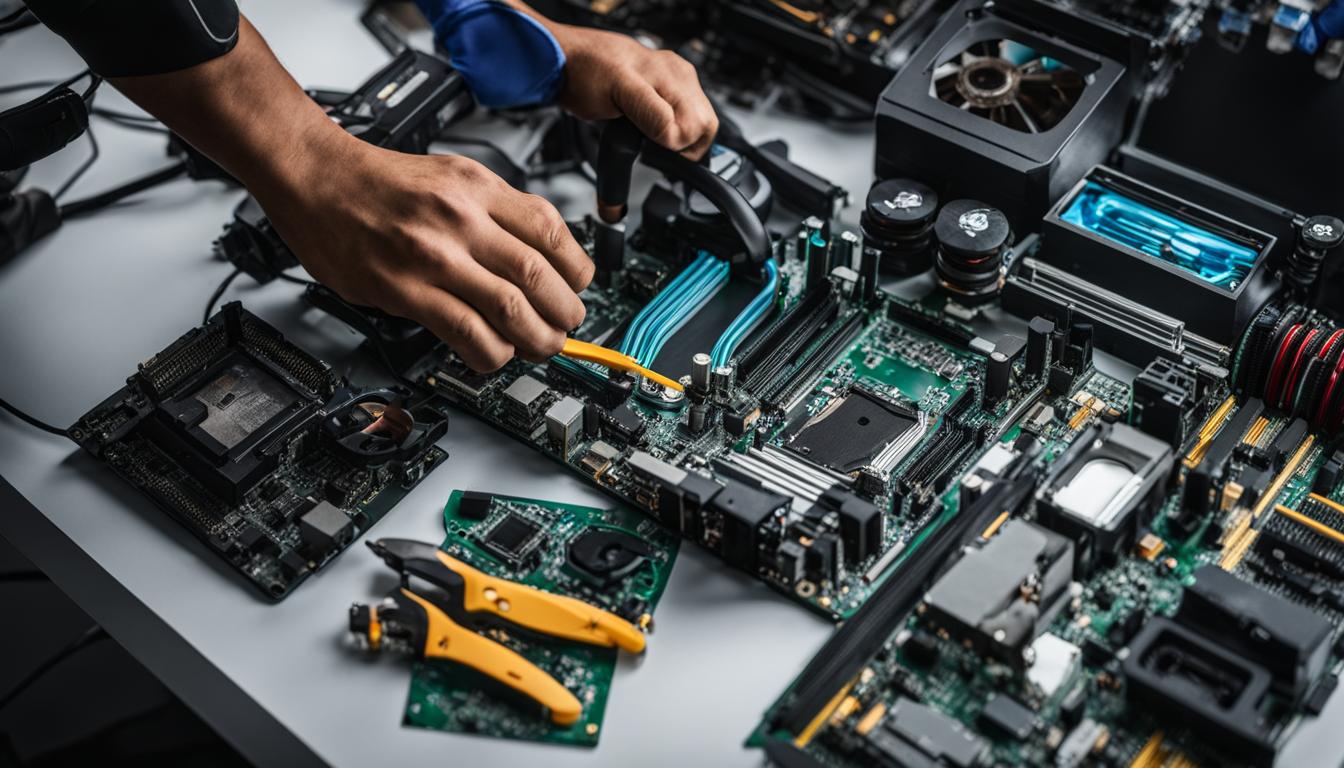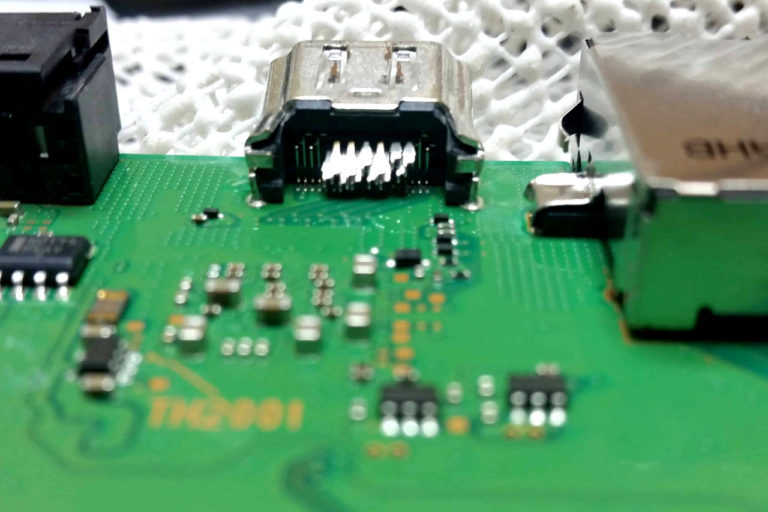The Shift Towards Integrated Components in Servicing and Its Implications for Computer Maintenance
The emergence of new technologies, such as cloud computing, 5G, augmented and virtual reality, AI, machine learning, and software 2.0, is accelerating the shift towards integrated components in servicing. These technologies provide access to greater compute power, network speeds, and data, enabling companies to innovate and create new products and services. The shift towards integrated components requires companies to adapt their management strategies by pushing innovation to the edges of the organisation, enabling continuous learning, decentralising technology deployment, and redefining security responsibilities.
Integrated components in servicing offer several benefits to companies. By leveraging hybrid or multicloud management technologies, companies can access virtually unlimited compute power and data sets, enabling them to test, launch, and scale innovations quickly. The use of 5G network speeds and AI-driven speech and algorithms enhances user experiences. Additionally, integration facilitates automation and streamlines processes, improving accessibility and data synchronisation, increasing efficiency and revenue, enabling scalability, and reducing costs.
The Benefits of Integrated Components in Servicing
Integrated components in servicing offer numerous benefits to companies seeking efficient and streamlined solutions. By leveraging hybrid or multicloud management technologies, organizations gain access to virtually unlimited compute power and data sets, empowering them to test, launch, and scale innovations quickly. This ability to harness the power of integrated components allows businesses to stay ahead of the competition and meet the ever-increasing demands of the market.
Moreover, integration facilitates automation and streamlines processes, leading to improved efficiency and revenue generation. By connecting different service components seamlessly, companies can enhance accessibility and data synchronization, ensuring that information is accurate and up-to-date across all systems. This synchronization also enables businesses to operate more efficiently, reducing time wasted on manual data entry and eliminating the risk of data discrepancies.
Additionally, integrating components in servicing allows for optimal scalability. As companies grow and expand, the ability to scale their services becomes crucial. Integrated components provide the flexibility and adaptability needed to handle increased workloads seamlessly. This scalability also extends to cost reduction. By streamlining processes and eliminating redundant tasks, businesses can optimize their resources, lowering operational expenses and maximizing profitability.
| Benefits of Integrated Components | Description |
|---|---|
| Quick Innovation | Virtually unlimited compute power and data sets enable rapid testing, launching, and scaling of new innovations. |
| Streamlined Processes | Automation and seamless integration improve efficiency, revenue generation, and reduce time wasted on manual tasks. |
| Enhanced Accessibility and Data Synchronization | Integration ensures accurate and up-to-date information across all systems, eliminating the risk of data discrepancies. |
| Optimal Scalability | Integrated components provide the flexibility and adaptability needed to handle increased workloads and allow for cost reduction. |
With the benefits of integrated components in servicing, businesses can revolutionize their operations, improve customer experiences, and effectively navigate the ever-evolving landscape of the industry.
The Importance of Continuous Learning in Integrated Components Servicing
The rapid advancements in AI, machine learning, robotics, and other technologies are driving the need for a culture of continuous learning in integrated components servicing. As companies embrace the shift towards integrated components, employees at all levels must develop tech literacy and continuously update their skills to keep up with changing technologies. Continuous learning ensures that employees are equipped with the necessary knowledge to leverage integrated components and contribute to the success of the organization.
Continuous learning in integrated components servicing entails training “citizen developers” using low-code/no-code tools, as well as full-stack developers and engineers. This approach empowers employees to take ownership of their learning journey and enables them to contribute to the development and maintenance of integrated components. By staying up-to-date with the latest advancements, employees can effectively leverage integrated components to improve operational efficiency, enhance customer experiences, and drive innovation.
Implementing a culture of continuous learning requires a holistic approach that involves providing opportunities for professional development, fostering a supportive learning environment, and leveraging technology-enabled learning platforms. By investing in employee training and development, companies can ensure that their workforce remains competent and adaptable in the face of evolving technologies. Continuous learning also promotes employee engagement and satisfaction, as employees have the opportunity to continuously enhance their skills and contribute to the organization’s growth.
Advantages of Continuous Learning in Integrated Components Servicing
- Enhanced technical skills: Continuous learning enables employees to stay updated with the latest advancements in integrated components servicing, enhancing their technical capabilities.
- Improved problem-solving: Continuous learning equips employees with the knowledge and skills to identify and solve complex problems that may arise in the maintenance of integrated components.
- Increased innovation: Continuous learning fosters a culture of innovation, as employees with up-to-date knowledge can leverage integrated components to develop creative solutions and drive business growth.
- Enhanced efficiency: Equipped with the latest skills and knowledge, employees can streamline processes and optimize the utilization of integrated components, resulting in increased operational efficiency.
- Adaptability to change: Continuous learning prepares employees for technological advancements and changes in the integrated components landscape, making them more adaptable in dynamic business environments.
In conclusion, continuous learning is essential in the realm of integrated components servicing. It empowers employees to keep pace with rapidly advancing technologies and leverage integrated components to drive innovation and improve operational efficiency. By fostering a culture of continuous learning, companies can build a highly skilled and adaptable workforce that can effectively maintain and utilize integrated components, thereby gaining a competitive edge in the market.
Overcoming Challenges in System Integration
System integration can be a complex and demanding process that requires businesses to combine multiple subsystems and navigate various integration methods. This integration of systems is essential for ensuring seamless communication and data sharing across different components of an organization. However, there are several challenges that businesses commonly face when attempting to integrate their systems.
Legacy Systems
One of the major challenges in system integration is dealing with legacy systems. These are older technologies or applications that are still critical to a company’s business processes. Legacy systems often have outdated architectures and may not be compatible with modern integration methods. Finding ways to incorporate these legacy systems into the integrated environment can be time-consuming and complex, requiring careful planning and execution.
Rapid Changes in the Integration Landscape
The integration landscape is constantly evolving, with new technologies and standards emerging regularly. Keeping up with these changes can be a challenge for businesses. They need to invest in staying updated with the latest integration methods and technologies, as well as adapt their existing systems accordingly. Failure to keep pace with these changes can result in integration gaps and inefficiencies.
Lack of Skilled Resources
System integration requires expertise in both technical and business domains. However, finding skilled resources who possess the necessary knowledge and experience in integration can be a challenge. There is a demand for professionals who understand both the technical aspects of integration and the business requirements. Without a skilled team, businesses may struggle to effectively plan, execute, and maintain their integration processes.
Lack of Accountability
Another challenge in system integration is the lack of clear ownership and responsibility for different subsystems. In an integrated environment, it is crucial to have defined roles and accountability to ensure that each component functions seamlessly. Without clear ownership, there can be confusion regarding problem identification, resolution, and overall system stability.
| Challenges in System Integration | Solutions |
|---|---|
| Legacy Systems | Develop a comprehensive plan for legacy system integration, considering compatibility, potential upgrades, and phased implementation. |
| Rapid Changes in the Integration Landscape | Invest in continuous learning and stay up-to-date with the latest integration technologies and standards. Implement agile methodologies to adapt quickly to changes. |
| Lack of Skilled Resources | Identify and hire skilled professionals with expertise in integration. Provide training and development opportunities to existing team members. |
| Lack of Accountability | Establish clear ownership and responsibility for subsystems. Define workflows, escalation paths, and problem-solving procedures. |
The Importance of Business Integration
Business integration plays a crucial role in aligning IT with business goals and optimizing organizational processes. It enables companies to drive innovation, improve efficiency, and enhance agility, ultimately leading to improved customer experiences and business growth. To fully understand the significance of business integration, it is essential to explore its impact on IT and business alignment, optimization, and innovation.
IT and Business Alignment
Effective business integration ensures that IT strategies and initiatives are closely aligned with the overall objectives of the organization. By bringing together IT and business leaders, companies can bridge the gap between technology and business requirements. This alignment enables IT solutions to effectively support key business processes, facilitate growth, and enhance decision-making capabilities. IT and business alignment create a collaborative environment where technology becomes a strategic enabler rather than a mere support function.
Optimization and Innovation
Business integration drives optimization by streamlining processes and leveraging technologies such as cloud computing and automation. By optimizing workflows and eliminating redundant tasks, companies can enhance efficiency, reduce costs, and improve overall operational performance. Furthermore, business integration fosters innovation by breaking down silos and promoting cross-functional collaboration. When different areas of the organization work together seamlessly, it becomes easier to share ideas, leverage diverse expertise, and develop innovative solutions that drive competitive advantage.
Enhanced Business Agility
Business integration enables companies to adapt quickly to changing market dynamics and customer demands. By integrating various systems and processes, organizations can respond more effectively to emerging opportunities and challenges. This enhanced agility allows businesses to capitalize on trends, pivot their strategies, and stay ahead of the competition. Whether it is scaling operations, entering new markets, or launching innovative products and services, business integration provides the foundation for agile decision-making and execution.
| Benefits of Business Integration |
|---|
| Cost reduction |
| Operational streamlining |
| Increased innovation |
| Improved customer experience |
| Enhanced business agility |
Business integration offers a range of benefits, including cost reduction, operational streamlining, increased innovation, improved customer experience, and enhanced business agility. These advantages empower companies to achieve sustainable growth and navigate the complexities of the modern business landscape. By embracing business integration, organizations can unlock their full potential and create a future-ready framework that drives success.

Conclusion
The shift towards integrated components in servicing carries significant implications for computer maintenance in the UK market. As companies adapt to this new paradigm, they must embrace integrated servicing solutions, continuous learning, and efficient system integration processes to stay competitive.
By leveraging the benefits of integrated components, businesses can enhance their competitiveness and drive innovation. Integrated components offer access to greater compute power and data sets, enabling companies to test, launch, and scale innovations quickly. Additionally, integration facilitates automation, streamlines processes, and increases efficiency, ultimately improving the customer experience.
However, businesses must also overcome challenges in system integration, such as legacy systems and a lack of skilled resources. To address these challenges, companies should invest in integration experts, adopt agile working strategies, and establish clear ownership and responsibility for subsystems.
In this evolving landscape of computer servicing in the UK, it is crucial for businesses to align their IT with business goals through effective business integration. This involves optimizing processes, utilizing cloud resources, and driving innovation. By doing so, companies can reduce costs, streamline operations, and improve agility, ultimately enhancing their position in the UK market.
FAQ
What are the implications of the shift towards integrated components in servicing for computer maintenance?
The shift towards integrated components in servicing requires companies to embrace integrated servicing solutions, continuous learning, and efficient system integration processes in order to enhance competitiveness, drive innovation, and improve customer experiences in the evolving landscape of computer servicing in the UK.
What are the benefits of integrated components in servicing?
Integrated components in servicing offer several benefits to companies, including access to greater compute power and data sets, quick testing, launching, and scaling of innovations, enhanced user experiences through 5G network speeds and AI-driven algorithms, automation and streamlined processes, improved accessibility and data synchronization, increased efficiency, revenue, scalability, and cost reduction.
Why is continuous learning important in integrated components servicing?
Continuous learning is important in integrated components servicing because as technology drives innovation to the edges of the organization, employees at all levels must develop tech literacy and continually update their skills to keep up with changing technologies. This ensures that employees have the necessary skills to leverage integrated components and contribute to the company’s success.
What challenges are involved in system integration?
System integration can be a complex process that involves combining subsystems and different integration methods. Challenges include legacy systems that are critical to business processes, rapid changes in the integration landscape, a lack of skilled resources, and a lack of accountability.
How can businesses overcome challenges in system integration?
To overcome challenges in system integration, businesses must have a deep understanding of their IT and business needs, adopt agile working strategies, invest in integration experts, establish clear ownership and responsibility for subsystems, and carefully select the right integration tools.
Why is business integration important?
Business integration is important for aligning IT with business goals, creating a more efficient and innovative organization. It involves optimizing processes, utilizing cloud resources, preserving legacy systems, driving innovation, improving agility and consistency, and can result in cost reduction, operational streamlining, increased innovation, improved customer experience, and enhanced business agility.












